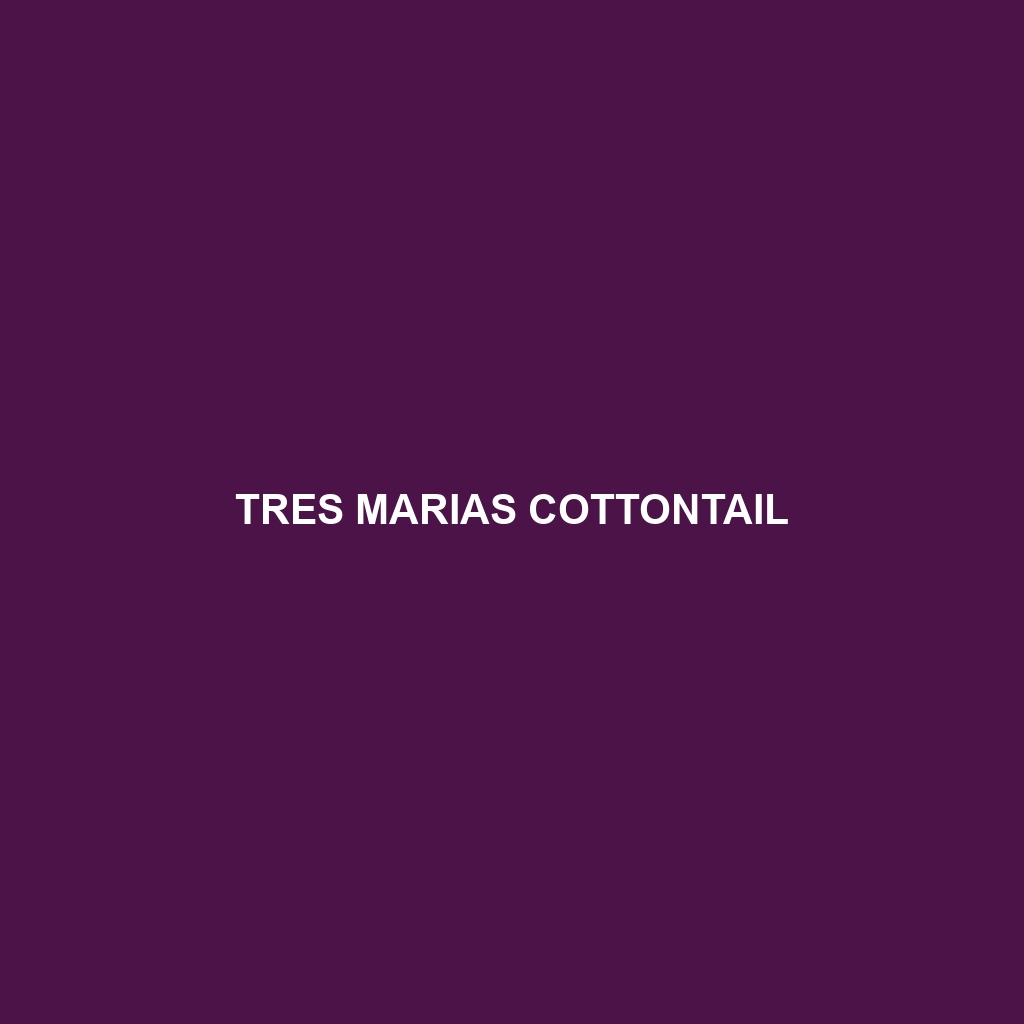Tres Marias Cottontail
Common Name: Tres Marias Cottontail
Scientific Name: Silvilagus graysoni
Habitat
The Tres Marias Cottontail is primarily found in the Tres Marias Islands, located off the coast of mainland Mexico. This species thrives in a variety of habitats, including scrubland, grasslands, and forested areas. These islands provide a unique environment that supports diverse flora and fauna, making it an important ecological niche for this rabbit species.
Physical Characteristics
The Tres Marias Cottontail is a medium-sized rabbit, typically weighing between 1.5 to 2.5 kg (3.3 to 5.5 lbs). Its fur is characterized by a mix of brown, gray, and black tones, providing effective camouflage in its natural habitat. Notable features include its long ears, which can reach lengths of up to 10 cm (4 inches), and its distinctive white underbelly. The eyes are large and dark, allowing for good vision in low light.
Behavior
Tres Marias Cottontails are primarily nocturnal, making them more active during twilight and nighttime hours. They are known for their social structures, often living in familial groups. Their typical behaviors include digging and creating burrows, which provide shelter and protection from predators. This species is also known for its ability to move swiftly, making rapid, zig-zag patterns to evade threats.
Diet
The diet of the Tres Marias Cottontail consists mainly of grasses, herbs, and other plant materials. During the warmer months, they are observed feeding on leaves, flowers, and fruits, while in cooler seasons, they rely more on woody shrubs and bark. This rabbit’s feeding habits play a crucial role in the ecosystem, as they help in seed dispersal and maintaining plant health.
Reproduction
The breeding season for Tres Marias Cottontails typically occurs from February to September, with an average of 3 to 4 litters per year. Each litter can consist of 2 to 6 offspring, which are born blind and hairless. The mother displays strong protective behaviors, often creating a nest in grass or underbrush to shelter her young until they are ready to venture out.
Conservation Status
The Tres Marias Cottontail is currently classified as vulnerable due to habitat loss and environmental changes affecting its island ecosystem. Conservation efforts are focused on habitat protection and restoration initiatives to ensure the survival of this unique species.
Interesting Facts
One fascinating aspect of the Tres Marias Cottontail is its ability to adapt to small environmental changes, showcasing its resilience. Additionally, this rabbit is considered an important cultural symbol for the local communities on the Tres Marias Islands.
Role in Ecosystem
Tres Marias Cottontails play a vital role in their ecosystem as herbivores, significantly impacting plant communities through their foraging activities. They serve as prey for various predators, helping to maintain ecological balance and diversity in their habitat.
